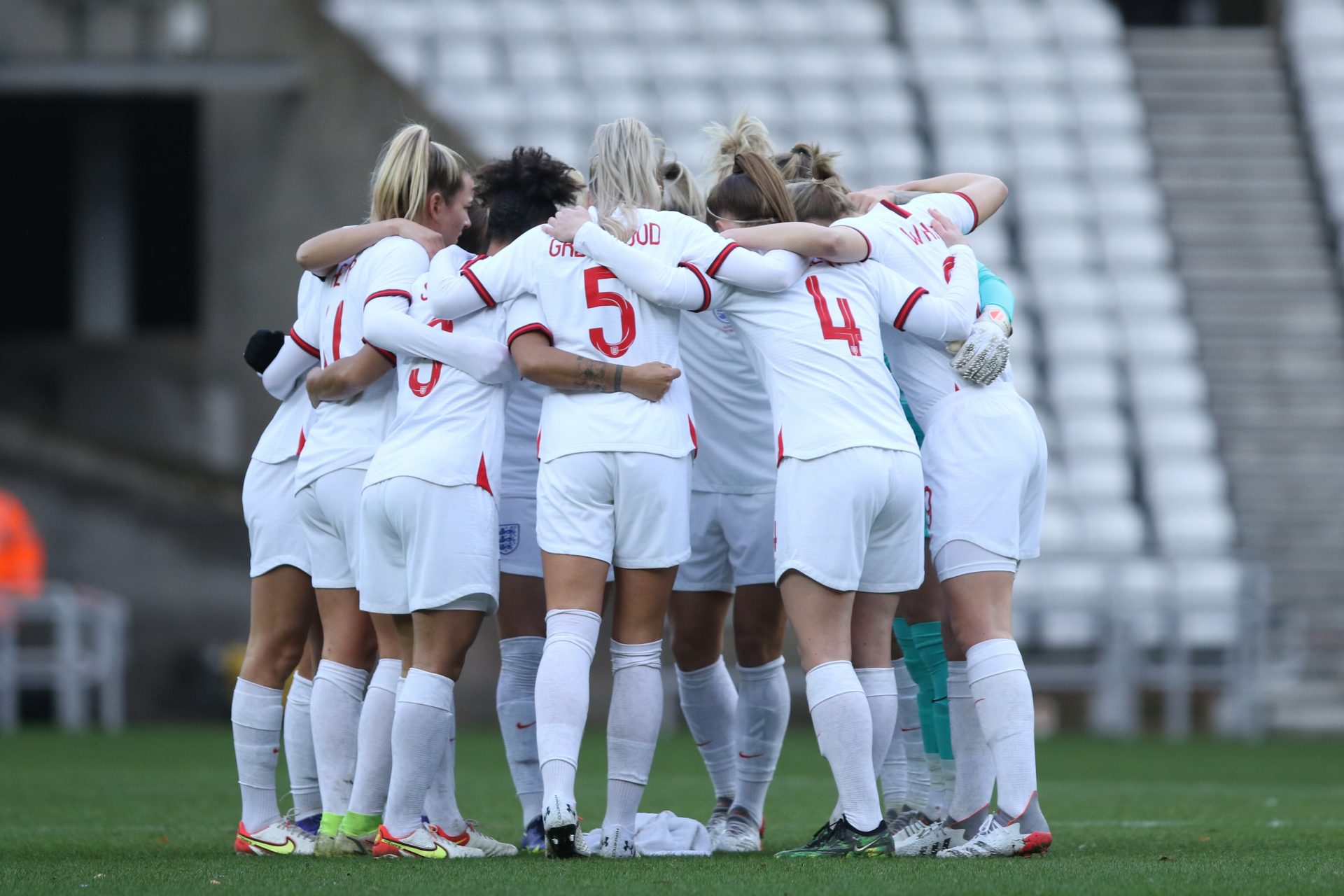4 inequalities that still exist in women’s football (despite the ban lifting 50 years ago)
Women were banned from football until 50 years ago. Has there been any progress for gender equality since then?
On 5 December 1971, women in England were finally welcomed back onto football pitches. It was the first time in 50 years that women had been allowed to play, but not the first time ever. In fact, until 1921 women’s football had been just as – if not more – popular than the men’s game. Then they were forced to stop playing.
During the first world war, women had taken over most of men’s roles: in the workplace, society and sport. When the war was over, the FA began getting more and more cautious of the success surrounding female participation in football. After a match between Dick, Kerr’s Ladies FC and St Helens brought in an audience of 53,000, the largest spectator attendance since records began, it had had enough. It banned women due to the fact that “the game of football is quite unsuitable for females and ought not to be encouraged.”
You may also like
Euros 2020 final: everyone is forgetting that the Women's England team made it to the finals in 2009
The 50-year ban was lifted 50 years ago, but its legacy lives on. A sport that had the makings of a truly empowering sport for everyone is now shrouded in inequality. Things are on the up: women’s football is more popular than ever and changes are happening fast. But it’s taken a long time for this change to happen and there are still huge gaps in support, funding and discussion for women’s football.
Inequality in women’s football
1. Pay
As of January 2020, England’s men and women’s teams are paid the same amount. That includes match fees and bonuses played outside of major tournaments. That’s also true in Australia, Norway and New Zealand.

However, all is not equal. Men still hugely out-earn men given the gender disparity in prize money. At the Women’s World Cup in 2019, the winning team (USA) received £3.2 million – double what they won in 2015. Yet, for the 2018 men’s World Cup, the prize money was worth £315 million. That’s 10 times as much. Next year, we can watch as the women’s Euro 2022 tournament takes centre stage. Uefa has announced that it is to double the fund, meaning the 16 teams will share £13.7 million. Yet, this summer the 24 men’s teams shared a pot of £317 million.
And that’s even without mentioning club level wages, which are staggeringly different. Fran Kirby, Chelsea’s heroic striker, has a world-record salary of up to £300,000 a year. Romelu Lukaku, who also plays for Chelsea, is on £450,000 a week.
You may also like
Uefa doubles Women’s European Championship fund – but we need to talk about the gender pay gap in sport
2. Viewers
1.12 billion viewers tuned into official broadcast coverage of the 2019 Women’s World Cup held in France. 3.5 billion people watched the men’s game the year before. Why is it that women just don’t seem to get the same audiences?
It can’t be to do with quality: a 2021 study compared events in matches across genders found that women’s matches have, on average: more free kicks, duels, accelerations, clearances, ball touches and passes – but fewer fouls – than men’s matches. Essentially, women’s football is arguably a better, more engaging spectator sport than the men’s game.

The media can partly be to blame: a 2018 study by Women in Sport found that just 10% of sports coverage was focused on women’s games. Next year’s Women’s Euros are set to be the largest games ever, with more than 700,000 tickets to matches sold. Whether the same rush to buy them we saw with the men’s game this year occurs is yet to be seen.
3. Sexual harassment
However, female fans might be put off attending matches thanks to high levels of sexual harassment. According to a 2021 survey by The Football Supporters’ Association, 20% of women reported having experienced unwanted physical attention while at men’s games.
And it isn’t just the fans who have to suffer this form of abuse. Pre-pandemic cases of sexual discrimination and harassment targeting high-profile women in the game were also up. In the 2017/18 season, reports rose by almost 400% year on year, according to Women in Football. The most commonly cited abuse was on social media.
You may also like
Online abuse during the Tokyo 2020 Olympics was majority directed at female athletes
4. Participation
In Saudi Arabia, women are still banned from playing football – and indeed all sports. In Iran, women were banned from watching football in stadiums until 2019, when Fifa threatened to suspend the country’s teams from competitions if it wasn’t lifted.
These may be extreme examples, but the segregation of gender in football does still exist in England, particularly at a grassroots level. The FA has previously been on a campaign to encourage girls and women to play the sport, and managed to double participation over three years, announcing in 2020 that 3.4 million women were now taking part in the game.
You may also like
Super League reaction: Patrick Bamford makes an important point about the united outrage
But it’s still clear that men outnumber women: according to the FA, there are 12 million people playing the sport in England. That still means men make up three-quarters of recreational footballers. While women’s grassroots teams are booming, particularly in cities like London with teams such as Goal Diggers and Hackney Ladies becoming somewhat local celebrities, football is still a hugely male-dominated sport.
How do we improve these things? Watching, applauding and buying into women’s football is helpful to signal an audience. But ultimately these changes need to come from those with power (and money) – the clubs and boards who can implement proper changes to funding, exposure and treatment of women. Let’s not leave it another 50 years before we achieve sporting equality.
Images: Pexels / Getty
Source: Read Full Article
